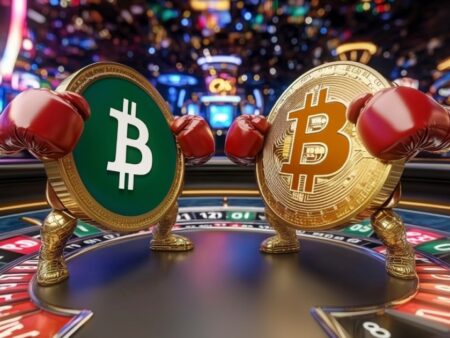A meme coin is a type of cryptocurrency that derives its value, appeal, and often its very existence from internet memes, humorous themes, or pop culture references
Unlike traditional cryptocurrencies like Bitcoin or Ethereum, which often aim to offer technological innovation or solve specific problems within the financial sector, meme coins are primarily driven by community enthusiasm, social media hype, and sometimes, celebrity endorsements. These cryptocurrencies are typically characterized by their low entry price, making them accessible to a broad audience, and they thrive on virality rather than inherent utility.
History of Meme Coins
The history of meme coins can be traced back to the early 2010s, with the launch of Dogecoin in 2013 being a pivotal moment. Created by Billy Markus and Jackson Palmer as a light-hearted critique of the cryptocurrency market’s seriousness, Dogecoin was based on the “Doge” meme featuring a Shiba Inu dog. Initially conceived as a parody, Dogecoin unexpectedly gained traction due to its friendly community, generous tipping culture, and subsequent endorsements by figures like Elon Musk.
Early Days
In the wake of Dogecoin’s success, other meme coins emerged, each trying to capture a slice of the meme-driven market. These early coins were often based on other internet memes or cultural references, like the “Nyan Cat” meme, leading to coins like “Nyancoin.” However, none achieved the same fame or longevity as Dogecoin until much later. The early days were marked by experimentation, where the community’s engagement and the coin’s humor stood at the forefront of its value proposition.
2021 Bull Run
Dramatic price increases, with some seeing gains of thousands of percent within days or weeks characterized the 2021 bull run for meme coins. This period also highlighted meme coins’ speculative and volatile nature, with prices driven more by social media sentiment, celebrity endorsements, and the fear of missing out (FOMO) rather than traditional economic fundamentals.
However, this surge also attracted regulatory attention, as the potential for market manipulation and the impact on retail investors became concerns. The bull run of 2021 not only showcased the power of memes in the crypto space and underscored the speculative bubble aspect of these assets, leading to a subsequent market correction that affected many meme coins’ valuations.
Characteristics of Meme Coins
These coins share several distinctive characteristics:
- Community-Driven: Their value and popularity hinge on community support and social media buzz rather than traditional financial metrics or technological advancements.
- Volatility: Due to their speculative nature, meme coins are known for extreme price volatility, offering high risks and potentially high rewards.
- Lack of Utility: Many lack practical applications, focusing instead on being fun or a means of quick speculation.
Examples of Meme Coins
Dogecoin
The aforementioned Dogecoin (DOGE) stands as the archetype of meme coins and has paved the way for all others that followed. It was initially created as a humorous take on the burgeoning cryptocurrency market, capitalizing on the popular “Doge” meme featuring a Shiba Inu dog.
Despite its origins as a parody, Dogecoin unexpectedly gained significant traction, propelled by a friendly community, a culture of generous tipping, and later, endorsements from notable figures like Elon Musk. Today, Dogecoin boasts one of the highest market caps among its peers and is accepted by various merchants for transactions, including crypto casinos.
Shiba Inu
Shiba Inu (SHIB), another prominent meme coin, was introduced in 2020 as a homage to Dogecoin. It quickly captured the public’s imagination during the crypto market surge of 2021. Unlike its predecessor, Shiba Inu has endeavored to expand beyond just being a meme coin by developing its ecosystem. This includes Shibaswap, a decentralized exchange, and other initiatives aimed at adding utility to the SHIB token, distinguishing it somewhat from the pure meme coin narrative.
New and Emerging Meme Coins
Pepe
The landscape of meme coins is continually evolving, with new projects frequently emerging to capture the zeitgeist of internet culture. One of these is Pepe (PEPE), which draws inspiration from the iconic Pepe the Frog meme. With its launch, PEPE has managed to carve out its niche in the meme coin market, leveraging humor and irony to build a vibrant community. Its growth has been notable, reflecting both meme culture’s power and crypto investments’ speculative nature.
Bonk
Another emerging player is Bonk (BONK), built on the Solana blockchain. This crypto has quickly gained attention due to its community-driven approach and the inherent advantages offered by Solana’s fast, low-cost transaction capabilities. Bonk’s marketing strategies, which heavily rely on social media engagement and community events, have helped cement its place among the notable meme coins, showcasing how community and platform can be leveraged for growth.
Wall Street Memes
Wall Street Memes (WSM) represents a different flavor of meme coin, drawing from the rebellious spirit of the Wall Street Bets subreddit. This coin taps into the meme culture surrounding financial markets and risky investments, aiming to combine the humor of memes with the speculative allure of cryptocurrency. WSM has managed to generate buzz through clever marketing and by resonating with an audience that appreciates the blend of finance and meme culture, highlighting the potential for these coins to reflect broader cultural and economic narratives.
Trends and Considerations in Meme Coins
As coins like these continue to proliferate, several trends and considerations have emerged. One significant trend is the attempt by newer coins to expand their utility beyond mere speculation. Projects are increasingly integrating DeFi elements, NFTs, or even developing their own gaming ecosystems to provide more substance to their tokens.
However, this shift also brings them under greater regulatory scrutiny, particularly concerning investor protection and potential market manipulation. The sustainability of these coins remains a critical question, with the crypto community debating whether these projects can survive beyond the initial hype.
Investors in meme coins must weigh the entertainment value and community spirit against the high volatility and speculative nature of these assets, ensuring they approach with caution, informed by thorough research and a clear understanding of the inherent risks.
Final Thoughts
In conclusion, meme coins represent a quirky and speculative segment of the cryptocurrency market, driven by cultural phenomena and internet culture. While they offer opportunities for quick gains, they also come with substantial risks due to their volatile nature and often lack of intrinsic value. As with any investment, potential investors should proceed with caution, informed research, and a clear understanding of the risks involved.
iGaming enthusiast and writer. I enjoy playing and testing new slots as well as working with many developers in the casino software industry. My new passion includes covering the endless innovation of crypto for iGaming its benefits for both players and casinos.




















